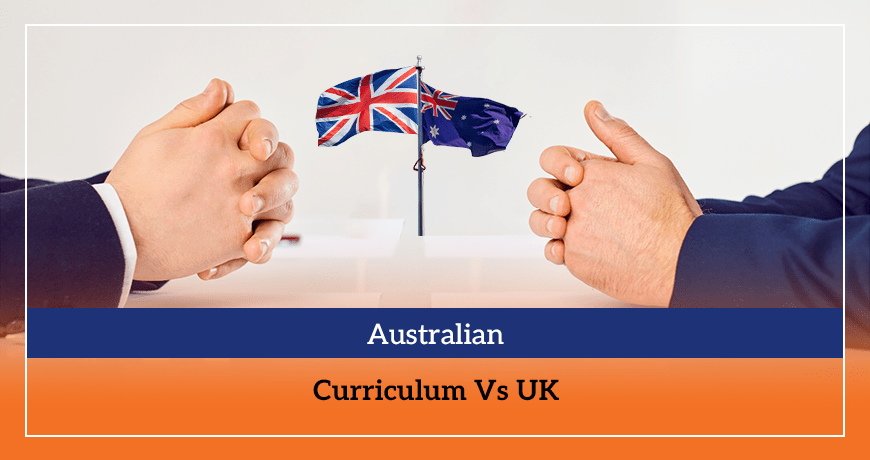Australian Education System vs UK, each has unique strengths and characteristics. Understanding these differences is essential for students, parents, and educators considering education options in either country. This article will explore areas such as structure, curriculum, assessments, and more to comprehensively compare.
Structure of the Education Systems: Australia vs UK
Both Australia and the UK have comprehensive education systems. They aim to prepare students with a well-rounded academic foundation.
The Australian education system has three main levels: primary, secondary, and senior secondary. While the UK education system has key stages. These stages span primary and secondary education, followed by further education.
Primary Education
This level includes Kindergarten (or Preparatory, often called Prep) to Year 6 or 7, depending on the state or territory. Students start at around age five or six and finish primary school by age 11 or 12.
In the UK, primary education includes Key Stage 1 (KS1) and Key Stage 2 (KS2). KS1 covers Years 1 and 2, starting at age 5 and ending at age 7. KS2 includes Years 3 to 6, from ages 7 to 11.
Secondary Education
This includes Years 7 or 8 to Year 10. Students usually start secondary school at age 12 or 13 and complete it by age 15 or 16.
This encompasses Key Stage 3 (KS3) and Key Stage 4 (KS4). KS3 covers Years 7 to 9, from ages 11 to 14. KS4 includes Years 10 and 11, from age 14 to 16. At the end of KS4, students take their GCSE exams.
Senior Secondary Education
This covers Years 11 and 12. Students typically start at age 16 and graduate by age 18. At the end of Year 12, students receive a certificate (like the HSC in New South Wales or the VCE in Victoria) and an ATAR score, which is important for university admissions.
In the UK, we call it Further Education. Known as Key Stage 5 (KS5) or sixth form, this includes Years 12 and 13, from age 16 to 18. During this stage, students typically study for A-levels or other qualifications needed for university entry.
Key Differences in Structure
Start Age and Duration: In Australia, students start formal education at around age 5 or 6, whereas in the UK, they start at age 5. Primary education in Australia can end in either Year 6 or Year 7, depending on the state, while in the UK, primary education ends in Year 6.
Transition Points: Australia has a distinct senior secondary level (Years 11 and 12), while the UK's secondary education is split into two stages (KS3 and KS4), with further education following.
Final Examinations: In Australia, the ATAR score is critical for university admissions. Meanwhile, in the UK, GCSEs and A-levels are important for future academic paths and careers.
Here's a quick overview of these two systems.
|
Feature
|
Australia
|
UK
|
|
Primary Education
|
Kindergarten/Prep to Year 6 or 7
|
Key Stage 1 (Years 1-2), Key Stage 2 (Years 3-6)
|
|
Primary Education Duration
|
Approximately 7 years
|
Approximately 6 years
|
|
Secondary Education
|
Year 7 or 8 to Year 10
|
Key Stage 3 (Years 7-9), Key Stage 4 (Years 10-11)
|
|
Secondary Education Duration
|
4 years (Years 7-10)
|
5 years (Years 7-11)
|
|
Senior Secondary Education
|
Years 11-12
|
Key Stage 5 (Years 12-13)
|
|
Senior Secondary Duration
|
2 years
|
2 years
|
|
Major Examinations
|
ATAR (Year 12)
|
GCSEs (Year 11), A-levels (Year 13)
|
|
Further Education
|
University or Vocational Education and Training (VET)
|
University or further education colleges (A-levels, HNDs)
|

Australian School System Vs UK
In both Australia and the UK, schools' funding and management are in different categories. Knowing these differences may help parents and students make educational choices. This section will look at School Types and Sectors in Australia and the UK.
Australia
In Australia, we have two main types of schools. Government (public) schools and non-government (private and independent) schools.
Government (Public) Schools
The government funds these schools. This means the government pays for most of the costs, so parents don't have to pay much. Most children in Australia go to public schools. They are spread nationwide, including in cities and small towns.
Public schools follow the national or state curriculum. They teach the same subjects and follow the same rules everywhere.
Non-Government (Private and Independent) Schools
Private and independent schools get less money from the government. They charge tuition fees, so parents have to pay for their children to attend. Fewer children go to private schools compared to public schools. These schools often have more resources, like better facilities or smaller class sizes.
Private schools can follow the national curriculum. Still, they might also offer additional programs or different teaching methods. They often have a specific focus, such as religious education or special academic programs.
UK
There are also two main types of schools in the UK. We have state schools and independent Schools.
State Schools
State Schools include Maintained Schools and Academies. The government funds maintained schools, similar to public schools in Australia. The government also funds academics, but they have more control over their budgets and curriculum compared to maintained schools.
Most children in the UK attend maintained schools. Many children attend academies, which are becoming more common in the UK.
They follow the national curriculum, ensuring all students learn the same subjects. Academies do not have to follow the national curriculum strictly, allowing them to offer more varied subjects and teaching methods.
Independent Schools
Independent schools in the UK are like private schools in Australia. They charge tuition fees and are not mainly funded by the government.
Fewer children attend independent schools compared to state schools. These schools often have better facilities and smaller class sizes.
Independent schools can choose their own curriculum and often offer specialised programs or unique teaching styles.
Comparison Table of School Types
|
|
Australia (Government)
|
Australia (Non-Government)
|
UK (State-Maintained)
|
UK (State - Academies)
|
UK (Independent)
|
|
Funding
|
Government-funded
|
Tuition fees
|
Government-funded
|
Government-funded but more autonomous
|
Tuition fees
|
|
Attendance
|
Majority of students
|
Fewer students
|
The majority of students
|
Increasing number of students
|
Fewer students
|

Australian Curriculum Vs UK
Now, talking about the curriculum and subjects in Australian and UK schools. Both Australia and the UK have structured curricula, but they approach them in slightly different ways.
Australia Curriculum
In Australia, the curriculum is based on a national framework called the Australian Curriculum. Each state and territory follows this framework. Still, there may be some adjustments to suit their specific needs.
The Australian Curriculum covers key subjects such as English, Mathematics, Science, and Humanities. It also includes subjects like Health and Physical Education, The Arts, and Technologies. Schools can offer additional programs, such as languages, to meet the interests of their students.
UK Curriculum
The UK follows the National Curriculum. However, there could be differences in the curricula of England, Scotland, Wales, and Northern Ireland.
The National Curriculum in the UK covers core subjects like English, Mathematics, and Science. Other subjects include History, Geography, Art and Design, Music, Physical Education, and Modern Foreign Languages.
In both Australia and the UK, bilingual programs and language education are important. Schools encourage students to learn additional languages.
Assessments and Examinations
Assessment methods differ significantly in Australia and the UK. Australia emphasises a blend of coursework and exams, culminating in ATAR scores for university admissions. Meanwhile, the UK emphasises standardised exams such as GCSEs and A-levels.
In Australia, educators assess students through a balance of coursework and exams. At the end of Year 12, students receive an Australian Tertiary Admission Rank (ATAR) score. It is essential for university admissions. The ATAR is calculated from school assessments and final exam results.
In contrast, there is a strong emphasis on standardised exams in the UK. At the end of Key Stage 4 (Year 11), students take the General Certificate of Secondary Education (GCSE) exams. These exams are crucial for moving on to further education. After GCSEs, students can take A-level exams at the end of Key Stage 5. A-level results are important for university admissions.
Quick Review on the Comparison of Assessment Methods
|
Feature
|
Australia
|
UK
|
|
Assessment Methods
|
Balance of coursework and exams
|
Emphasis on standardised exams
|
|
Key Examinations
|
ATAR (Year 12)
|
GCSEs (Year 11), A-levels (Year 13)
|
|
University Admission
|
ATAR scores
|
A-level results
|

Australian Higher Education Vs UK
Australia and the UK both boast world-renowned universities and vocational training options. Higher education in Australia includes universities and Vocational Education and Training (VET). While in the UK, higher education consists of university courses and Higher National Diplomas (HNDs).
Australian University courses typically last three to four years. They offer degrees such as bachelor's, master's, and doctorate. VET programs provide practical training and shorter courses. It can lead to certificates and diplomas.
Meanwhile, UK University courses usually last three years for a bachelor's degree. Some courses may extend to four years. Students can also pursue HNDs, which are vocational qualifications offering practical skills for specific careers.
Comparison of Higher Education
|
Feature
|
Australia
|
UK
|
|
Types of Courses
|
University, VET
|
University, HND
|
|
Duration
|
3-4 years for university degrees
|
3-4 years for university degrees
|
|
Practical Training
|
VET programs
|
HND programs
|
|
University Rankings
|
Several globally ranked universities
|
Several globally ranked universities
|
Cost of Education
Naturally, the cost of education varies from country to country. In Australia, public schools are generally free or low-cost for residents. In comparison, private schools charge significant fees. Higher education costs can be higher. But scholarships and other financial aid are available to help students.
State/Public schools generally do not charge tuition fees for domestic students. Still, they may charge minor fees for extracurricular activities and resources. Independent schools, however, charge tuition fees. University tuition fees vary, with students often relying on student loans and scholarships to manage costs.
Quick Comparison of Education Costs:
|
Cost Category
|
Australia
|
UK
|
|
Public Schools
|
Minimal fees, typically AUD 0 - AUD 500/year
|
No tuition fees for state-funded schools
|
|
Private Schools
|
AUD 5,000 - AUD 30,000+/year
|
GBP 10,000 - GBP 40,000+/year
|
|
Higher Education
|
AUD 20,000 - AUD 45,000+/year
|
GBP 10,000 - GBP 30,000+/year
|

Extracurricular Activities and Sports
Participating in sports and extracurricular activities also helps students build friendships and enjoy a well-rounded school experience. Like any other country, Australian and UK schools are full of extracurricular activities and sports.
Australian schools place a strong emphasis on outdoor sports like cricket and rugby. They offer so many clubs and activities like music, drama, and science clubs. UK schools also provide a mix of indoor and outdoor sports, including rugby and netball. Extracurricular opportunities are plentiful, with clubs and societies for various interests.
Academic Year and Holidays
The academic year in Australia starts in January and ends in December, spanning four terms. Each term is typically around ten weeks long.
- Term 1: January to March
- Term 2: April to June
- Term 3: July to September
- Term 4: October to December
This provides a more evenly spread-out vacation schedule throughout the year. Students can enjoy approximately 10-12 weeks of holidays in total, including breaks between each term.
In contrast, the academic year in the United Kingdom runs from September to August and is divided into three terms. The terms are structured as follows:
- Autumn Term: September to December
- Spring Term: January to April
- Summer Term: April to July
The UK academic calendar offers shorter breaks between terms, resulting in a more concentrated academic schedule throughout the year.
Quick Comparison:
|
Feature
|
Australia
|
United Kingdom
|
|
Academic Year Start
|
January
|
September
|
|
Academic Year End
|
December
|
August
|
|
Number of Terms
|
Four
|
Three
|
|
Term 1
|
January – March
|
September – December
|
|
Term 2
|
April – June
|
January – April
|
|
Term 3
|
July – September
|
April – July
|
|
Term 4
|
October – December
|
|
|
Total Weeks of Holidays
|
Approximately 10-12 weeks
|
Approximately 6-7 weeks
|
Special Educational Needs (SEN) and Inclusivity
Both Australia and the UK prioritize support for students with special educational needs. Policies and programs are in place to ensure inclusivity and provide necessary resources to SEN students. Schools strive to create diverse and supportive learning environments, recognizing the importance of catering to the individual needs of every student.
Teacher Qualifications and Training
Teacher qualifications and training are robust in both countries. In Australia, teachers must meet certification requirements and engage in ongoing professional development. Teacher-student ratios vary, with efforts to maintain manageable class sizes to provide effective learning environments.
Teachers in the UK undergo strict training programs and must meet qualification standards. Like Australia, the teacher-student ratio is an important focus. They also take the initiative to ensure that class sizes remain conducive to effective teaching.
Conclusion
Australian Education System vs UK, both systems offer advantages and face different challenges. Whether considering the structure, curriculum, assessments, or costs, both systems aim to provide high-quality education. Choosing between these two systems for international students and parents depends on your preferences.